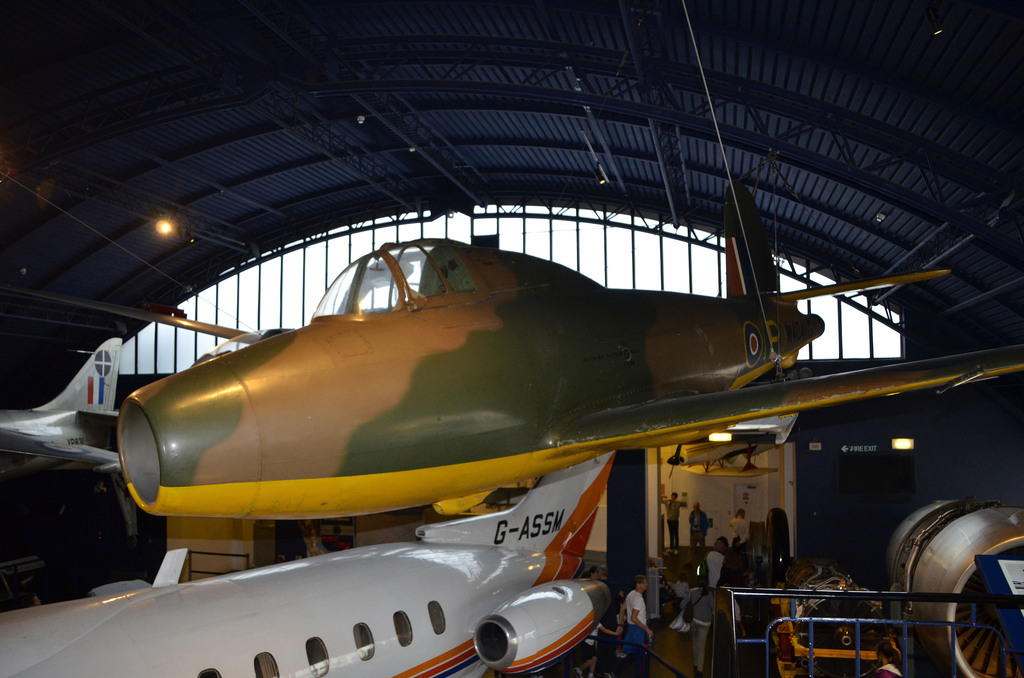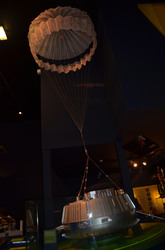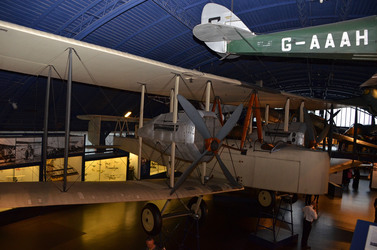Sign In
CloseBritain's first successful jet aircraft, the Gloster E28/39 first flew on 15 May 1941 with test pilot Gerry Sayer at the controls. This experimental aircraft was built to test the new jet engine developed by Frank Whittle. The E28/39 led to the creation of the Gloster Meteor, the first British jet fighter to see active service, in July 1944.
In September 1939, the Air Ministry issued a specification to Gloster for an aircraft to test one of Frank Whittle's turbojet designs in flight. The E.28/39 name comes from the aircraft having been built to the 28th "Experimental" specification issued by the Air Ministry in 1939. The E.28/39 specification required the aircraft to carry two .303 Browning machine guns in each wing, but these were never fitted.
Gloster's chief designer George Carter worked closely with Whittle, and laid out a small low-wing aircraft of conventional configuration. The jet intake was in the nose, and the single tail-fin and elevators were mounted above the jet-pipe, although due to uncertainty about the spinning characteristics of a jet aircraft, at in an earlier design stage twin fins and rudders were considered. Two jet pipe/rear fuselage arrangements were also originally considered due to the potential loss of thrust through the jet pipe itself, a 'short jet' with a cutaway rear fuselage and short exhaust, and a 'long jet' with a fully enclosed jet pipe, however the 'long jet' was subsequently selected. A contract for two prototypes was signed by the Air Ministry on 3 February 1940, and the first of these was completed by April 1941. Manufacturing started at Brockworth near Gloucester, but was later moved to Regent Motors in Cheltenham High St (now the Regent Arcade) which was considered a location safer from bombing.
Although the initial flight tests were relatively early in the Second World War, the German Heinkel He 178 had been first test-flown on 27 August 1939, at Rostock-Marienehe on the Baltic Coast, days before the outbreak of the war.
Statue in Coventry, England of Sir Frank Whittle observing the first British jet-powered flight
Plaque on base of the statue of Frank Whittle in Coventry, England
The E.28/39 was delivered to Brockworth for ground tests beginning on 7 April 1941, using a non-flightworthy version of the Power Jets W.1 engine. These included some short "hops" of about 6 ft in height from the grass airfield. With these initial tests satisfactorily completed, the aircraft was fitted with a flightworthy engine rated for 10 hours use, and then transferred to Cranwell which had a long runway. On 15 May 1941, Gloster's Chief Test Pilot, Flight Lieutenant Gerry Sayer flew the aircraft under jet power for the first time from RAF Cranwell, near Sleaford in Lincolnshire, in a flight lasting 17 minutes. In this first series of test flights a maximum true speed of 350 m.p.h. was attained, in level flight at 25,000 ft. and 17,000 r.p.m. turbine revolutions.[1]
Over the following months, tests continued with increasingly refined versions of the engine. Later in the test program small, auxiliary fins were added near the tips of the tailplanes to provide additional stability in high-speed flight.[2] John Grierson, in 1971, called these "end-plates", and wrote that their purpose was to increase the fin area due to the problem of rudder blanking in a side-slip.[3]
On 21 October 1942, Sayer disappeared during an acceptance test flight in a Hawker Typhoon, presumed killed, and his assistant took over testing of the E.28/39. The oil system had been changed before he flew; after it was proven, the aircraft was handed over to the RAE for testing by service pilots.
The second prototype E.28/39 (W4046) - initially powered by a Rover W2B engine - joined the test programme on 1 March 1943. Testing had revealed problems with engine oil and lubricants. Flying of W4046 was by Gloster pilots John Grierson and John Crosby Warren, because Michael Daunt was then involved with the F.9/40 (the Meteor). In April 1943, W4046 flew to Hatfield for a demonstration in front of the Prime Minister and members of the Air Staff. It was taken to Farnborough and fitted with a 1,500 lbf (6.7 kN) W2.B. It achieved 466 mph. On 30 July 1943, while on a high-altitude test flight, the second prototype was destroyed in a crash resulting from an aileron failure. The accident was attributed to the use of the wrong type of grease in the aileron controls; one aileron had "stuck in position, sending the aircraft out of control".[2] The test pilot, Squadron Leader Douglas Davie, successfully bailed out from 33,000 ft, suffering frostbite on the way down.[4]
The first prototype was fitted with the 1,700 lbf (7.6 kN) thrust W2/500. It was flown successfully to 42,000 ft, but level speed at altitude was not attempted due to fuel shortage. The pilot commented in his report on a need for cockpit heating and a larger fuel tank.[4] It continued flight tests until 1944. By that time, more advanced turbojet-powered aircraft were available. The Gloster E.28/39 was not able to achieve high speeds, but it proved to be a capable experimental platform and exhibited a "good climb rate and ceiling".[2] Experience with the E.28/39 paved the way for Britain's first operational jet fighter aircraft, the Gloster Meteor. The Meteor used the Rolls-Royce Welland engine, the next stage from the Power Jets W.1.
Of the E.28/39 Grierson wrote: "The very favourable impressions of jet propulsion obtained ... have all been endorsed by subsequent flights ... The E.28 is a most pleasant little aeroplane to handle, particularly on account of the excellent field of vision from the pilot's seat ...
Submission Information
- Views:
- 827
- Comments:
- 0
- Favorites:
- 0
- Rating:
- General
- Category:
- Visual / Photography




